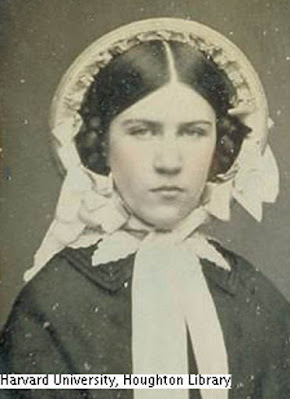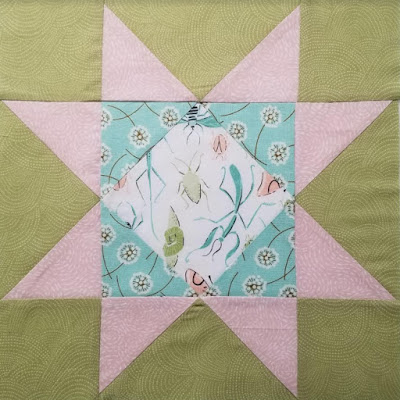Sarah moved to Concord, Massachusetts in 1855 with several family members from New Hampshire. Her younger brother Franklin Sanborn had been recruited by Ralph Waldo Emerson to open a school for a few of the town's intellectually elite families. At the time of his interview he dined with one of those families, the Alcotts. "The dinner was without meat but nice and inviting."
Franklin recalled that he accepted Emerson's proposal because of a "domestic reason."
"My sister Sarah, eight years older than I, had been a successful teacher in several towns, but had fallen into a condition of ill health and low spirits which distressed me....Sarah should accompany me to Concord...should keep my house and assist me in the school, if her spirits would permit."
Franklin also took with him two other unmarried relatives, sister Helen and cousin Louisa Leavitt, to help him in the school, which became a center of Concord life in the five years before the Civil War.
Franklin also recruited the Alcotts; May at one point was the drawing teacher and Louisa and Anna, the actresses, were in charge of the dramatic productions the students put on at the Unitarian Church under the auspices of the Concord Dramatic Union, a Sanborn enterprise. Profits went to the poor.
Ellen Tucker Emerson recalled the Alcott daughters "have a great love and talent for Theatricals."
Sanborn's School attracted boarders, such as the younger sons of Henry James of New York. Locals included children of the Emersons, the Pratts and for a while Sophia and Nathaniel Hawthorne's children.
Una's mother changed her mind and withdrew her adolescent daughter. The school was just too radical and too frivolous. Dramatic productions, dances and Sanborn's aggressive antislavery stance were problems but as Sophia wrote her sister Elizabeth Peabody, also a skilled teacher, it was the idea of co-educational classes that was just too much.
"We entirely disapprove of this commingling of youths and maidens at the electric age in school. I find no end of ill effect from it."
Many parents chose the school because of Sanborn's abolitionist zeal. People in Concord were well aware of Franklin's acquaintance with John Brown who'd spent time in town raising money for his shadowy army that ultimately failed in an attack on the Harper's Ferry armory in October, 1859. Few realized that Sanborn had been sending Brown some of the school's profits and his own family money.
Sarah and her brother boarded at 49 Sudbury Road
Five months after Brown was hung for his insurrection, four or five federal marshals came in the night to arrest Sanborn for his part in the Brown plot and his defiance of a U.S. Senate subpoena. Concord came to the rescue, the whole neighborhood awakened by Sarah's screaming in the yard. The church bells began sounding an alarm and over a hundred people gathered.
Anna Whiting, nearing 50, ran over to help Sarah do what they could to confound the law, scaring their horses and blocking their way. Sarah is reported to have pulled one marshal's beard so he'd let go of her brother.
Ellen Emerson's account:
"Miss Anne Whiting got into the carriage and held the door and put herself in the way, and fought with a cane, and so prevented them from getting Mr. Sanborn in, and gave the people time to collect. The men hurt her and scratched her and tore her dress trying to get her out, but she stayed in and hindered them a long time."Judge Rockwell Hoar (son Sam was a Sanborn pupil) issued a writ of habeus corpus and the marshals facing the local sheriff backed by a mob left the scene without their prisoner. Sanborn eventually spent a night in jail but was released on a technicality and decamped to Canada for a judicious long vacation.
"You have seen by the papers...how entirely we have defeated the outrageous purpose of the ruffians..... I shall also sue them for damages and hope to build my schoolhouse of of their money. I am well...Sarah also is pretty well though tired....she has become quite a lioness."
"A subscription paper has been opened to buy a beautifully mounted pistol – cost say $75 – to present to Miss Sanborn for her bravery in defending her brother. [James] Redpath suggests that there be Engraved upon the barrel 'The straight and narrow path to heaven', L. B. [?] has the matter in charge & will probably accept the proposal. The amount has nearly all been raised."
4 B triangles.
And 12 C triangles.
A—Cut 4 squares 2-1/2”
B—Cut 1 square 5-1/4”. Cut into 4 triangles with two diagonal cuts.
12” Block (3” Grid)
A—3-1/2”
B—7-1/4”
C—3-7/8”
16” Block (4” Grid)
A—4-1/2”
B—9-1/4”
C—4-7/8”
8” ‐ 3‐3/8”
12” ‐ 4‐3/4”
16” ‐ 6‐1/8”
Further Reading
https://books.google.com/books?id=GNVBAAAAIAAJ&newbks=0&printsec=frontcover&source=gbs_ge_summary_r&cad=0#v=onepage&q&f=false


























3 comments:
Thank you Barbara for this wonderful BOM, I really appreciate your work about the quilt but much more to let us know the history behind the block!
Rina, from Sicily
And thank you alwways for the Rest of the story.
Will instructions be posted for the setting triangles for the western star setting?
Post a Comment